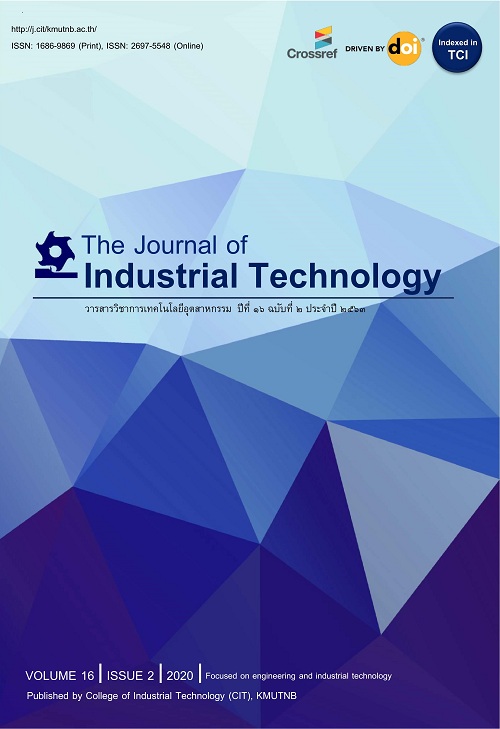การประยุกต์ใช้ระบบอาร์เอฟไอดีกับการจัดการศูนย์กระจายสินค้า กรณีศึกษา บริษัทบุญถาวรเซรามิค จำกัด
An Application of RFID Systems for Distribution Center Management A Case Study of Boonthavorn Ceramic Co.,Ltd.
Abstract
บทคัดย่อ
งานวิจัยฉบับนี้เป็นการนำเสนอการประยุกต์ใช้ระบบอาร์เอฟไอดี (Radio Frequency Identification) ของศูนย์กระจายสินค้า กรณีศึกษา บริษัทบุญถาวร เซรามิค จำกัด มีวัตถุประสงค์เพื่อศึกษาความเป็นไปได้ที่จะนำเอาระบบอาร์เอฟไอดีมาแทนที่ระบบบาร์โค้ดในกระบวนการรับสินค้าเข้าและจ่ายสินค้าออกในคลังสินค้า เพื่อลดเวลาและขั้นตอนการทำงาน รวมถึงเพิ่มประสิทธิภาพในการทำงานของศูนย์กระจายสินค้ารังสิต โดยศึกษากระบวนการทำงานของศูนย์กระจายสินค้ารังสิตแล้วทำการทดลองติดตั้งระบบอาร์เอฟไอดีในกระบวนการรับสินค้าเข้าและจ่ายสินค้าออกจากคลังสินค้าจากนั้นได้ทำการพัฒนาโปรแกรมควบคุมการสั่งงาน และติดตั้งระบบอาร์เอฟไอดี พบว่า เมื่อนำมาอาร์เอฟไอดีมาประยุกต์ใช้งานช่วยลดเวลาและขั้นตอนการทำงานของการใช้ระบบบาร์โค้ด และความมันวาวของสินค้าประเภทสุขภัณฑ์และเซรามิคก็ยังไม่มีผลต่อการส่งสัญญาณของตัวอ่านและแท็ก แต่อย่างไรก็ตาม อุปกรณ์ที่นำมาติดตั้งยังตอบสนองการทำงานของระบบโดยรวมได้ไม่เพียงพอ เนื่องจากมาตรฐานของอุปกรณ์และไม่มีระบบป้องกันการรบกวนจากปัจจัยแวดล้อมภายนอก นอกจากนี้ การติดตั้งระบบอาร์เอฟไอดีของสินค้าประเภทสุขภัณฑ์ทั้งระบบควรเริ่มตั้งแต่ต้นน้ำของโซ่อุปทาน ตั้งแต่ผู้ผลิตสินค้า มายังศูนย์กระจายสินค้า และร้านขายปลีก การไหลของสารสนเทศในโซ่อุปทานจึงจะมีพร้อมและถูกต้องแม่นยำในการบริหารจัดการโซ่อุปทานให้มีประสิทธิผลมากขึ้น
Abstract
This research presents an application of RFID Systems of the distribution center at Boonthavorn Ceramic Co.,Ltd. The Purpose is to study the feasibility of the RFID system to replace the barcode system in receiving and dispatching processes. This system would help to decrease time, process steps and increase efficiency in the distribution center. The processes in the distribution center were studied. The installation of the RFID system was then conducted for receiving and dispatching processes. A software program to control the RFID system was developed. It was found that the use of RFID could reduce time and process steps comparing to those of the barcode system. The glitter surface of sanitary and ceramic products does not affect on the performance of the reader and tags. However, the overall performance of the reader is not sufficient due to its standard and not having any protection system from external noises. In addition to these, to implement the RFID system for sanitary products, it should start from the upstream supply chain that is the manufacturers to distributors and retailers. The information flow along the chain will be available and accurate to manage the supply chain more efficiently.
Keywords
Refbacks
- There are currently no refbacks.






